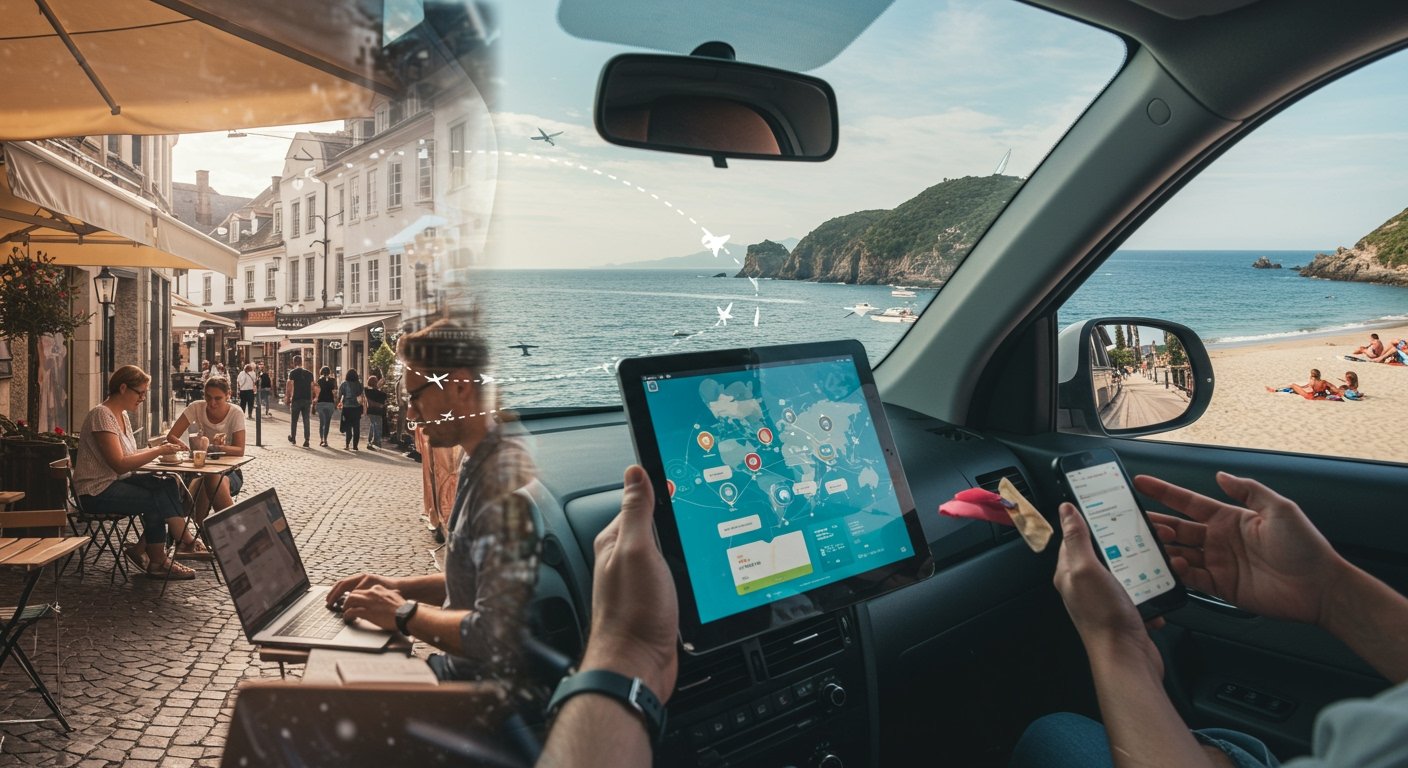Global travel patterns for Summer 2025 indicate robust demand coupled with evolving traveler behaviors shaped by economic factors and the increasing normalization of remote work. Fresh data highlights significant year-over-year growth in bookings and shifts in preferences, pointing towards a peak travel season defined by longer stays and strategic budgeting.
Surging Demand and Increased Spending
Analysis of recent booking trends reveals a strong resurgence in travel intent for the summer of 2025. Domestic travel bookings have seen a remarkable 202% year-over-year increase, signaling sustained confidence in exploring destinations closer to home. International bookings are also experiencing substantial growth, rising by 173% compared to the previous year, indicating a strong appetite for global exploration.
Alongside the surge in volume, travelers are planning longer getaways. The average trip length for Summer 2025 is projected to be 5.9 days, an increase from 5.1 days recorded in 2024. This extended duration contributes to higher anticipated spending, with Americans forecasting an average expenditure of $3,471 on their longest summer trip. This figure represents a 13% increase from the average spending reported the year prior.
The ‘Work-From-Anywhere’ Effect on Travel
A notable factor influencing both trip duration and accommodation choices is the growing integration of work with leisure. Nearly a quarter (23%) of travelers planning summer trips intend to work remotely during their getaways. This flexibility allows for more extended stays, particularly for international travel, where 20% of remote workers plan longer trips compared to just 14% in 2024.
This blend of work and vacation is also driving changes in accommodation preferences. The need for suitable workspace and a more home-like environment while working remotely is contributing to an increased use of private rentals, chosen by 20% of travelers compared to 15% in 2024.
Financial Considerations Shape Choices
Despite the high demand, financial concerns remain a significant factor influencing how and where people travel. Data indicates that travelers are actively seeking ways to mitigate costs.
Approximately 22% are opting to drive to their destinations instead of flying, a clear strategy to reduce transportation expenses. Similarly, 24% are choosing to stay with friends and family rather than booking hotels, leveraging personal networks to lower accommodation costs.
Destination Trends and Travel Styles
Domestic travel remains a popular choice for many Americans, with 64% planning one to two trips within the United States. Top states drawing significant interest include Florida (10%), California (9%), Pennsylvania (6%), and Ohio (5%).
Road trips are poised to be a prevalent mode of travel, planned by 60% of respondents, aligning with the trend of driving over flying and offering flexibility for multi-stop itineraries.
International travel continues its strong recovery, with 41% of travelers planning to venture abroad this summer. U.S. summer travel to Europe specifically is up by 10%, extending a four-year trend of increasing popularity for the continent. Favored European cities include London, Paris, and Rome.
Beyond traditional hotspots, several international destinations are trending for Summer 2025, including Curacao, Osaka, St. Lucia, and Tokyo.
Motivations, Barriers, and Planning Tools
When asked about their travel motivations, travelers most prioritize combining relaxation and sightseeing (50%) and enjoying local food and cuisine (46%), highlighting a desire for immersive and balanced experiences.
Conversely, for those not planning summer trips, key barriers are primarily financial. Financial reasons overall are cited by 39%, with the economy and inflation specifically mentioned by 35%. Accommodation costs are also a significant impediment for 16% of potential travelers.
The landscape of travel planning is also seeing the increasing adoption of new technologies. The use of generative artificial intelligence (AI) in travel planning has risen to 15%, up from 10% previously. Travelers are primarily leveraging AI for researching activities (61%), destinations (38%), and dining options (47%).
Demographic insights indicate that Baby Boomers are notably contributing to the travel sector’s revenue, showing a propensity for higher spending on their trips.
In summary, the Summer 2025 travel season is characterized by robust demand and increased spending, significantly shaped by the flexibility offered by remote work and the strategic cost-saving measures adopted by travelers in response to economic pressures.








